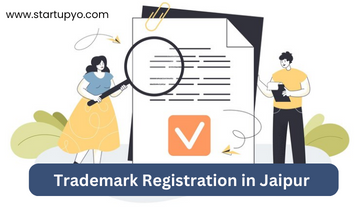Introduction : Threshold Limit for GST Registration
Goods and Services Tax, commonly known as GST, Threshold Limit for GST Registration represents a distinctive approach to taxation in India. Its main purpose is to simplify the tax system by replacing many different types of taxes with just one. This single tax applies to both goods (physical things like clothes and gadgets) and services (things people do for you, like fixing your car or giving you a haircut).
What do you understand by GST Registration?
GST registration is like getting a special ID card for your business that allows you to collect a kind of tax called the Goods and Services Tax (GST) from your customers when you sell goods or services. In many countries, businesses must do it because it’s the law and ensures they obey the tax rules. Once you’re registered, you need to file regular reports with the government about the GST you’ve collected and paid. It assists the government in monitoring tax collections and guarantees an equitable system for all.
Activities that are Eligible for Taxation :
- supply of Goods and Services
- The marketing of products and services to advance business interests.
- Import of Commodities into India
Activities that are Exempted from GST registration :
- Supply of Goods and services not liable to tax.
- When a person who hasn’t registered for GST sells goods or services to someone who is registered for GST
- When an e-commerce operator, who hasn’t registered for GST, sells goods or services online.
Read More: How to Download GST Registration Certificate?
What is the minimum turnover limit for GST Registration?
Companies that make more than Rs. 40 lakhs annually from selling goods and Rs. 20 lakhs from providing services are required to sign up for the Goods and Services Tax (GST) and pay taxes on the products and services they sell. On the other hand, businesses earning less than Rs. 40 lakhs a year aren’t forced to get GST registration, but they can choose to do so voluntarily. Opting for GST registration voluntarily can be beneficial because it lets them take advantage of input tax credits and other perks.
There are some special category states, which include Arunachal Pradesh, Manipur, Meghalaya, Mizoram, Nagaland, Tripura, and Sikkim, that have different minimum turnover limits. In these states, the threshold for selling goods is Rs. 20 lakhs, and for providing services, it’s Rs. 10 lakhs.
GST Council has recommended that businesses with an annual turnover that reaches more than Rs. 40 lakhs should register for GST, regardless of their location.
In 2023, it’s expected that the minimum turnover for GST in India will remain the same, at Rs. 40 lakhs. This should relieve small businesses and allow them to enjoy the benefits of GST. It will also help the government collect taxes from businesses of all sizes, no matter how big or small they are.
Threshold Limit for GST Registration:
For Normal Taxpayers (Traders and Manufacturers):
- The GST registration threshold for normal taxpayers is based on their aggregate annual turnover, which includes both the supply of goods and services.
- A business must register under the GST system if its annual turnover surpasses Rs. 40 lakhs (Rs. 4 million) anywhere in India.
- However, there is a different threshold for businesses operating in specific regions known as special category states, which include states like Arunachal Pradesh, Manipur, Meghalaya, Mizoram, Nagaland, Tripura, and Sikkim, as well as union territories like Puducherry and Telangana.
- In special category states, Puducherry, and Telangana, the GST registration threshold is lower, set at an annual turnover exceeding Rs. 20 lakhs (Rs. 2 million) for the supply of goods and services.
- If a business’s turnover crosses these thresholds, it becomes mandatory for them to register for GST, and they must comply with the related tax regulations.
Read More: GST Registration Validity Extension?
For Other Service Providers
- The threshold limit for service providers (those who do not supply goods) is based solely on the annual turnover from the services they offer.
- Service providers in regular category states are obligated to register for GST when their yearly turnover goes beyond Rs. 20 lakhs (Rs. 2 million).
- In special category states, the threshold limit for service providers is even lower, set at an annual turnover exceeding Rs. 10 lakhs (Rs. 1 million).
- If service providers’ turnover crosses these respective limits, they are obligated to register for GST and comply with the relevant tax rules.
These threshold limits are of utmost importance in deciding if a business or service provider should proceed with GST registration. They help streamline tax compliance and ensure smaller businesses are not unduly burdened with complex GST procedures if their annual turnover remains below the specified thresholds. Businesses need to monitor their turnover and take appropriate steps for GST registration when required to remain compliant with tax laws.
Conclusion
In India, understanding GST registration is important for businesses. GST makes taxes easier and more transparent. It’s like a special ID for your business. If your business fulfills certain criteria, GST registration becomes mandatory.
GST aims to reduce corruption and make tax rules fair. GST registration comes in various forms, and the procedure comprises multiple stages. Each type of registration is designed for different businesses.
In summary, GST registration is a crucial part of doing business in India. It simplifies taxes and promotes transparency. Understanding the rules and types of registration is essential for businesses to operate smoothly.
FAQ’s
What is aggregate Turnover?
Aggregated turnover includes your yearly turnover along with the yearly turnover of any business entities that are associated with or connected to you in some way.
How much turnover is required for GST?
40 Lakhs (for goods) and Rs. 20 lakhs (for services) are required to register for GST and pay taxes on their taxable goods and services.
What is aggregate turnover in GST?
Aggregate turnover” means the total worth of all taxable transactions (excluding those where the recipient pays the tax, known as reverse charge), sales that are not subject to tax, exports of goods or services, and sales across state borders by people or businesses using the same Permanent Account Number (PAN). This calculation is done on a national scale. However, it doesn’t include central tax, state tax, union territory tax, integrated tax, or cess in the calculation.
How to calculate aggregate turnover in GST?
Taxable supplies (items you sell with GST). Exempt supplies (transactions not subject to GST). Exported goods or services (sales to other countries). Supplies between states.



